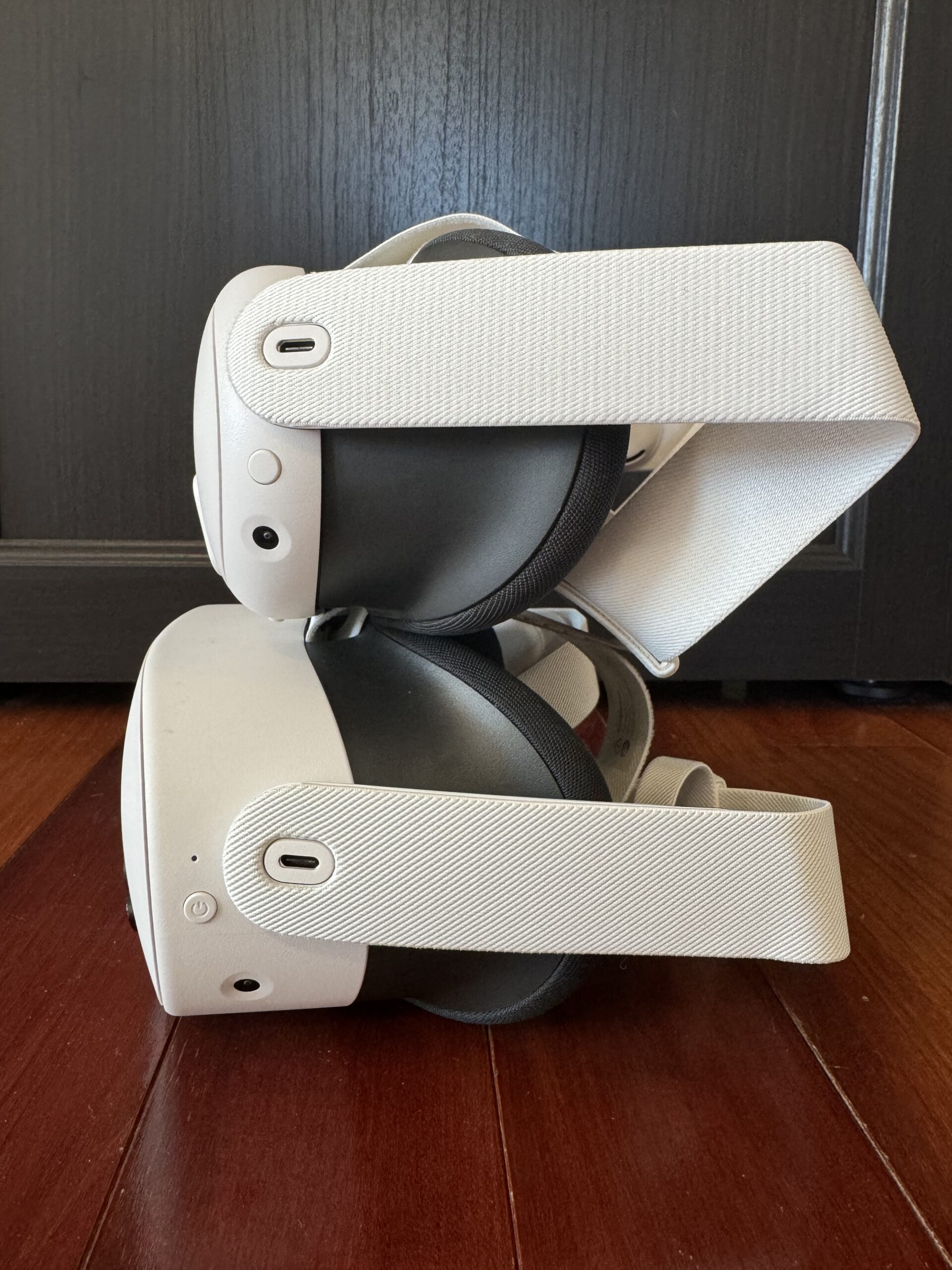It's been just over two years now since soon-to-depart CTO John Carmack told a Meta Connect audience about his vision for a super low-end VR headset that came in at $250 and 250 grams. "We're not building that headset today, but I keep trying," Carmack said at the time with some exasperation.
On the pricing half of the equation, the recently released Quest 3S headset is nearly on target for Carmack's hopes and dreams. Meta's new $299 headset is a significant drop from the $499 Quest 3 and the cheapest price point for a Meta VR headset since the company raised the price of the aging Quest 2 to $400 back in the summer of 2022. When you account for a few years of inflation in there, the Quest 3S is close to the $250 headset Carmack envisioned.
Unfortunately, Meta must still seriously tackle the "250 grams" part of Carmack's vision. The 514g Quest 3S feels at least as unwieldy on your face as the 515g Quest 3, and both are still quite far from the "super light comforts" Carmack envisioned. Add in all the compromises Meta made so the Quest 3S could hit that lower price point, and you have a cheap, half-measure headset that we can only really recommend to the most price-conscious of VR consumers.
Meta Quest 2 Plus
iFixit's recent teardown of the Quest 3S shows that the new headset is more than just a spiritual successor to the cheap and popular Quest 2. On the contrary, iFixit found the Quest 3S optical stack uses the exact same parts as the Quest 2, right down to the LCD panels and fresnel lenses.
In 2020, the 1832×1920 per-eye resolution offered by that visual stack represented a significant upgrade from what had come before, especially at such a low price point. Today, though, that dated display technology invites direct comparisons to the 2604×2208 per-eye display on last year's Quest 3. With the displays sitting just inches from your eyes, that difference represents a very noticeable 20 percent drop in apparent clarity, down from 25 pixels per degree to a mere 20.








 Loading comments...
Loading comments...

The price is definitely one of those reasons. Which would make sense why Meta wanted to put out a cheaper version.
The problem is that price isn’t the only factor. The Quest 2 offered something new and exciting for the pandemic era and at a price people could afford. Now that the fad is over, there’s not much that the Quest 3 or 3S is offering to draw people in.
AR experiences haven’t proven to hold interest and there aren’t many games or experiences getting hype from the socials.
So the 3S may get a few people to buy in where their biggest gripe was price, but that could also lead to disappointment and future lost customers if the hardware and software doesn’t show off what makes it better than the Quest 2.
The dedicated VR fans aren’t likely to buy a Quest 3S unless money really is an issue and it’s the best they can afford.
The Quest 3 is overall the best VR headset I have owned. I borrowed a friend's 3S and pretty much agree with the review in all major points. If you are a 14 year old and spending Christmas money or birthday funds or whatever, the 3S may be the price point you are looking for. Though, really kid, mow some lawns or something to make the extra bucks to buy a 3 and skip the 3S.
Also, I have a separate account with Meta for all my VR stuff. Complaining about Meta at this point in VR discussions is old and often disingenuous. You don't want to buy from Meta, cool. You don't like their history, or policies, or corporate governance, or Zuckerberg, or whatever, cool - you do you, but please stop telling me about how you feel every time VR comes up in discussion.
Finally, the library of experiences, activities, and options continues to grow with a lot of great content. If that library needs to rival Steam for you, okay, this isn't for you and probably never will be. Otherwise, I'd tell you it is a great time with a lot to enjoy. Between VR videos, watching movies, playing games, Horizon Worlds experiences, hanging with friends and building my own stuff - I never run out of things to do.